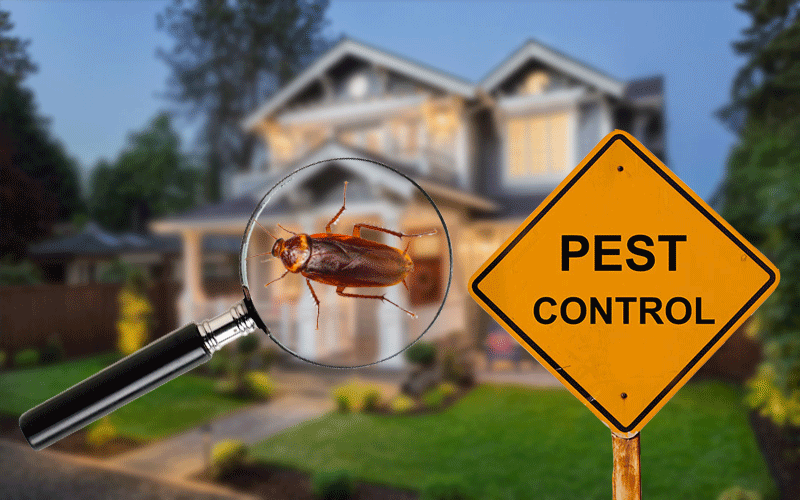High Quality A1 Pest Control Services Charlotte - Secure Your Home
High Quality A1 Pest Control Services Charlotte - Secure Your Home
Blog Article
Bed Bug Therapy Break Down: Contrasting Chemical Vs. Non-Chemical Solutions
In the realm of insect control, especially when handling the persistent concern of bed insects, the option in between chemical and non-chemical therapy remedies can be a crucial one. Both techniques supply unique benefits and downsides, affecting aspects such as effectiveness, safety considerations, and total cost. By analyzing the nuanced details of each technique, a clearer understanding of which course to go after in addressing a bed bug invasion can be acquired.
Effectiveness of Chemical Therapies
Chemical treatments for bed insect infestations have been extensively acknowledged for their rapid and powerful effectiveness in getting rid of these bugs. When thinking about the performance of chemical therapies, it is critical to understand that they can provide a thorough and fast service to a bed bug issue.
Additionally, chemical treatments have the advantage of using residual impacts, meaning that they can remain to remove bed insects also after the first application. This residual activity is specifically helpful in combating any potential re-infestations. In addition, the rapid action of chemical treatments can bring relief to individuals dealing with extreme bed bug infestations, allowing them to reclaim control of their space swiftly.
Safety Worry About Chemical Solutions
One important element that calls for cautious consideration when using chemical solutions for bed bug treatment is making certain the safety and security of residents and the environment. Direct exposure to certain chemicals made use of in bed pest therapies can lead to respiratory problems, skin irritation, or various other adverse responses, specifically in individuals with pre-existing conditions or sensitivities.
In addition, the ecological impact of chemical services is one more significant consideration. Some pesticides utilized in bed bug therapies might be dangerous to valuable insects, wildlife, and environments if they leach into the dirt or water systems. It is crucial to utilize chemical treatments deliberately, complying with safety guidelines, and thinking about much less harmful options to minimize these risks and make certain the reliable and secure monitoring of bed insect infestations.
Advantages of Non-Chemical Strategies
Thinking about the potential security issues and ecological effect connected with chemical options for bed pest treatment, discovering non-chemical approaches offers an encouraging choice with numerous distinctive benefits. Non-chemical approaches provide a much safer option for houses, especially those with people, family pets, or youngsters sensitive to harsh chemicals. These approaches get rid of the risks of direct exposure to hazardous compounds, decreasing the possibility for adverse health impacts. Furthermore, non-chemical treatments are eco-friendly, as they do not add to air or water contamination, making them a sustainable option for parasite control.
Additionally, non-chemical solutions can be effective in targeting bed bugs, consisting of hard-to-reach areas where chemical therapies may not permeate. Methods such as warmth treatment, vacuuming, vapor cleansing, and mattress coverings offer detailed obliteration without making use of unsafe chemicals. Additionally, non-chemical methods can be less disruptive, needing marginal preparation and permitting quicker reentry right into dealt with areas. On the whole, opting for non-chemical bed bug therapy approaches not only focuses on security and environmental management but additionally ensures efficient and extensive bug control.
Limitations of Non-Chemical Treatments

In addition, non-chemical treatments commonly need multiple applications to achieve successful removal. This can be time-consuming and may not constantly ensure full elimination of all bed bugs and their eggs, especially in concealed or hard-to-reach places.
In addition, the success of non-chemical treatments greatly counts on proper application and thoroughness, which can be challenging for people without professional experience. Insufficient application of non-chemical approaches may lead to incomplete eradication, resulting in relentless problems and the demand for added treatments.
For that reason, while non-chemical treatments have their advantages, it is crucial to acknowledge these constraints and consider them when establishing one of the most reliable approach for handling bed insect invasions.
Expense Contrast: Chemical Vs. Non-Chemical Options
Given the restrictions related to non-chemical treatments, an essential aspect to assess in the context of bed pest administration is the price contrast in between chemical and non-chemical options. Chemical therapies normally involve the application of pesticides by experts, which can vary from $250 to $900 per area, relying on the extent of the problem and the size of the location to be dealt with. In comparison, non-chemical therapies like warm treatment or heavy steam can be much more pricey, with costs ranging from $1,000 to $6,000 for an entire home. While the initial price of chemical treatments may appear lower, visit our website several therapies may be needed to totally eradicate the problem, possibly raising the overall cost. On the other hand, non-chemical choices may provide a more green and sustainable remedy, although they can be cost-prohibitive for some people. Inevitably, when considering the cost of bed insect treatment alternatives, it is essential to weigh the upfront expenses against the efficiency and long-term sustainability of the picked technique.
Verdict

Thinking about the prospective security worries and ecological effect linked with chemical remedies for bed pest treatment, checking out non-chemical methods offers a promising option with several distinctive advantages.Provided the limitations connected with non-chemical therapies, a vital element to evaluate in the context of bed insect monitoring is the expense contrast in between chemical and non-chemical options. In contrast, non-chemical treatments like warm therapy or vapor can be a lot more expensive, with prices varying from $1,000 to $6,000 for an entire home. While the preliminary cost of chemical browse around here therapies may appear reduced, several treatments might be required to completely eliminate the problem, possibly raising the total price.In verdict, when comparing chemical and non-chemical bed insect therapy options, it is essential to think about performance, safety, benefits, constraints, and price.
Report this page